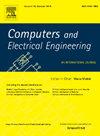Quasi-Z-source on-board charger based on reducing the size of the DC-Side active power buffer for electric vehicle applications
IF 4
3区 计算机科学
Q1 COMPUTER SCIENCE, HARDWARE & ARCHITECTURE
引用次数: 0
Abstract
Active power buffer (APB) modules in single-phase quasi-Z-source rectifiers (qZSRs) can effectively decrease the double-line frequency power ripple. APB modules can eliminate bulky passive devices, potentially improving system power density and reliability. However, single-phase qZSR systems with AC-side active power buffers (AC-SAPBs) raise system costs, power losses, and control complexity. They require low-reliability aluminum electrolytic capacitors (Al-Caps) and large inductors on the power grid input side to absorb the second-frequency ripple. This study, for the first time, proposes the inclusion of DC-side active power buffer (DC-SAPB) in single-phase qZSRs. The proposed system not only offers the benefits of AC-SAPBs but also reduces the power loss and control complexity. Moreover, metallized polypropylene film capacitors (MPPF-Caps) or multilayer ceramic capacitors (MLC![]() Caps), and small inductors can be used with higher reliability levels. The proposed topology can be employed in the integrated on-board charger of electric vehicles. A comparison between the DC-SAPB and AC-SAPB modules reveals that the former provides a higher performance and efficiency than those of the latter owing to its reduced weight and volume; hence, a large amount of energy can be stored in the battery. The simulation and experimental results verified the performance of the proposed system.
Caps), and small inductors can be used with higher reliability levels. The proposed topology can be employed in the integrated on-board charger of electric vehicles. A comparison between the DC-SAPB and AC-SAPB modules reveals that the former provides a higher performance and efficiency than those of the latter owing to its reduced weight and volume; hence, a large amount of energy can be stored in the battery. The simulation and experimental results verified the performance of the proposed system.

基于减小电动汽车直流侧有源电源缓冲器尺寸的准z源车载充电器
单相准z源整流器(qZSRs)中的有源功率缓冲(APB)模块可以有效地降低双线频功率纹波。APB模块可以消除笨重的无源器件,潜在地提高系统功率密度和可靠性。然而,带有交流侧有功功率缓冲器(ac - sapb)的单相qZSR系统会增加系统成本、功率损耗和控制复杂性。它们需要低可靠性的铝电解电容器(Al-Caps)和电网输入侧的大型电感器来吸收二次频率纹波。本研究首次提出在单相qzsr中加入直流侧有源功率缓冲器(DC-SAPB)。该系统不仅具有ac - sapb的优点,而且还降低了功耗和控制复杂性。此外,金属化聚丙烯薄膜电容器(MPPF-Caps)或多层陶瓷电容器(MLCCaps)和小型电感器可用于更高的可靠性水平。该拓扑结构可应用于电动汽车车载集成充电器中。通过对DC-SAPB和AC-SAPB模块的比较,发现DC-SAPB模块由于重量和体积的减小,具有更高的性能和效率;因此,大量的能量可以储存在电池中。仿真和实验结果验证了该系统的性能。
本文章由计算机程序翻译,如有差异,请以英文原文为准。
求助全文
约1分钟内获得全文
求助全文
来源期刊

Computers & Electrical Engineering
工程技术-工程:电子与电气
CiteScore
9.20
自引率
7.00%
发文量
661
审稿时长
47 days
期刊介绍:
The impact of computers has nowhere been more revolutionary than in electrical engineering. The design, analysis, and operation of electrical and electronic systems are now dominated by computers, a transformation that has been motivated by the natural ease of interface between computers and electrical systems, and the promise of spectacular improvements in speed and efficiency.
Published since 1973, Computers & Electrical Engineering provides rapid publication of topical research into the integration of computer technology and computational techniques with electrical and electronic systems. The journal publishes papers featuring novel implementations of computers and computational techniques in areas like signal and image processing, high-performance computing, parallel processing, and communications. Special attention will be paid to papers describing innovative architectures, algorithms, and software tools.
 求助内容:
求助内容: 应助结果提醒方式:
应助结果提醒方式:


